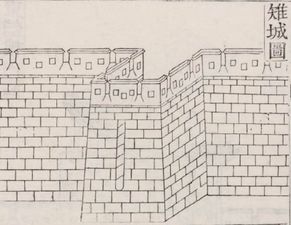"수원 화성 - 동2치"의 두 판 사이의 차이
(→영문) |
(→영문) |
||
| 22번째 줄: | 22번째 줄: | ||
A bastion, called ''chi'' in Korean, was a structure projecting outward from a fortress wall, which was designed to attack approaching enemies from the side. The name ''chi'' comes from the Chinese character referring to pheasant, because pheasants are good at hiding and peeping. Hwaseong Fortress has a total of 10 bastions, including two installed at the extended wall toward the Southwestern Guard Pavilion. | A bastion, called ''chi'' in Korean, was a structure projecting outward from a fortress wall, which was designed to attack approaching enemies from the side. The name ''chi'' comes from the Chinese character referring to pheasant, because pheasants are good at hiding and peeping. Hwaseong Fortress has a total of 10 bastions, including two installed at the extended wall toward the Southwestern Guard Pavilion. | ||
| − | The Eastern Bastion II was built between the Eastern Artillery Bastion and the Beacon Tower. Though the walls on both sides of this bastion have maintained their original appearance, the bastion collapsed in the early 20th century and was reconstructed in 1978. | + | The Eastern Bastion II was built between the Eastern Artillery Bastion and the Beacon Tower. Though the walls on both sides of this bastion have maintained their original appearance, the bastion collapsed in the early 20th century and was reconstructed in 1978. The colors of the stones on the lower and upper parts of this bastion are clearly distinct. This is because, during the original construction in the late 18th century, red-colored stones from the nearby area were used, however during the 1978 reconstruction, bright white stones from an area far away were brought in to be used. |
| + | |||
| + | *밝은 흰 색 --> bright --> bright white /light | ||
| + | *Changed the order of the last sentences | ||
===영문 해설 내용=== | ===영문 해설 내용=== | ||
2019년 3월 3일 (일) 22:06 판
| 동2치 東二雉 Eastern Bastion II |
|
 "동이치", 수원화성 테마관, 수원문화재단. |
|
수원 화성행궁 안내판 목록으로 가기 |
|
해설문
국문
동포루와 봉돈 사이에 있다. 치성의 크기는 동1치보다 약간 작다. 치성 좌우는 성벽이 일직선을 이룬다. 치성 바깥은 지형이 크게 낮아지면서 큰 골짜기를 이루었다. 치성 좌우 성벽은 비교적 원형이 잘 남아있다. 다만 동2치는 20세기에 들어와 상부가 무너져 내려서 1978년 화성 복원 때 새돌을 가져다 다시 축조했다. 그 때문에 좌우 성벽과 치성의 돌 색깔이 차이가 난다. 본래의 성돌은 약간 붉은 색을 띠고 크기도 크고 작은 것이 섞여 있는데 비해서 새로 쌓은 부분은 흰색에 돌 크기가 가지런하다. 본래의 성돌 중에는 돌을 뜨면서 정을 박은 흔적이 이빨 자국처럼 남은 것들이 있고 돌과 돌이 이를 물듯이 서로 맞물려 있는 모습도 볼 수 있다.
- 연혁 - 1796년(정조20) 건립 / 1978년 복원
- 규모 - 길이 7.05m, 폭 5.2m, 높이 3.75m
- 구조 - 석조
영문
Eastern Bastion II
A bastion, called chi in Korean, was a structure projecting outward from a fortress wall, which was designed to attack approaching enemies from the side. The name chi comes from the Chinese character referring to pheasant, because pheasants are good at hiding and peeping. Hwaseong Fortress has a total of 10 bastions, including two installed at the extended wall toward the Southwestern Guard Pavilion.
The Eastern Bastion II was built between the Eastern Artillery Bastion and the Beacon Tower. Though the walls on both sides of this bastion have maintained their original appearance, the bastion collapsed in the early 20th century and was reconstructed in 1978. The colors of the stones on the lower and upper parts of this bastion are clearly distinct. This is because, during the original construction in the late 18th century, red-colored stones from the nearby area were used, however during the 1978 reconstruction, bright white stones from an area far away were brought in to be used.
- 밝은 흰 색 --> bright --> bright white /light
- Changed the order of the last sentences
영문 해설 내용
치는 성벽의 일부를 밖으로 돌출시켜 접근하는 적을 옆에서 공격할 수 있도록 한 시설이다. 치는 원래 꿩을 뜻하는데, 꿩이 몸을 잘 숨기고 엿보기를 잘하기 때문에 이런 이름을 붙였다. 화성에는 용도에 설치한 2개의 치를 포함하여 총 10개의 치가 있다.
동2치는 동포루와 봉돈 사이에 있다. 치성 좌우의 성벽은 비교적 원형이 잘 보존되어 있으나, 동2치는 20세기 초에 무너져 내려서 1978년에 복구되었다. 화성을 처음 쌓을 때는 가까운 곳에서 채취한 붉은 빛의 돌을 사용했고, 복구 당시에 사용한 돌은 먼 곳에서 구해온 것으로 밝은 흰 색이다. 따라서 이 치의 하부와 상부의 돌 색깔이 뚜렷하게 구분된다.
화성 동편의 두 번째 치이다. 이 시설은 20세기에 들어와 대부분 무너졌다가 1979년에 복구되었다. 화성을 처음 쌓을 때 사용한 돌은 화성 가까운 곳의 산에서 돌을 채취했는데, 이 돌은 약간 붉은 색을 띤다. 복구할 때는 먼 곳에서 돌을 구해왔으며 밝은 흰색을 띤다. 이 시설에는 하부에 본래의 붉은 색 돌이 있고 상부 대부분은 흰색의 추가된 돌이 뚜렷하게 구분된다.
갤러리
- 『화성성역의궤』 도설 속 그림
VR Tour
